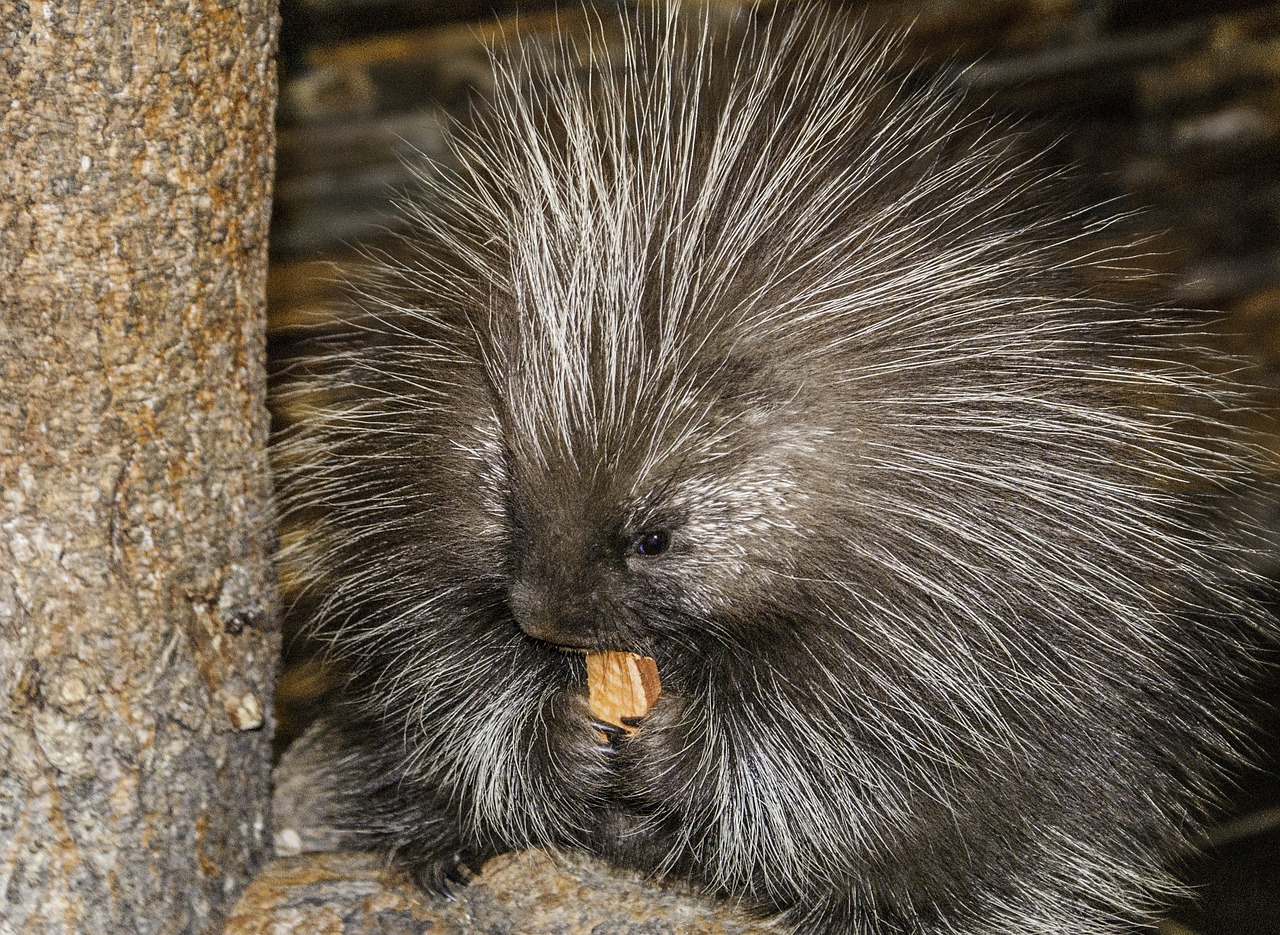“Porcupine attacks on the rise in Central Texas”
So read the headline for an article published a couple of years ago, evoking visions of marauding quilled beasts on a murderous, waddling rampage.
Who was in danger? According to the article, in the summer of 2014, veterinarians reported “an uptick in cats and dogs with porcupine attack-related injuries.” The sensationally headlined article didn’t really delve into what had caused the uptick but, as members of the rodent family (sticky, painful members), they’re attracted to garbage so urban sprawl into porcupine habitat would be the reasonable, if not terribly exciting, conclusion. Earlier this year, Texas Parks & Wildlife Magazine also reported on porcupines expanding their range from northern and western Texas. Austin and San Antonio may be seeing more simply because there are more.
Quill Pig
The name “porcupine” hails from the Latin porcus (pig) and spina (spine or quill) and makes one question why Latin is a dead language with that sort of pithy, descriptive accuracy. Texas Parks & Wildlife (thankfully very much alive) is also wonderfully accurate in its description of this chubby, sharp-spined, rat (after beavers, the second-largest rodent species in North America):
“Bowlegged and pigeon-toed, the porcupine slowly ambles along, swinging its fat body from side to side, muttering to itself. A pleasant enough creature when left alone, the porcupine is quick to defend itself at the slightest threat. With a top speed of little more than a fast waddle, it can escape very few animals; however, its defensive weapons are so effective, it has no need for speed.”
Sucker for a Salty Snack
The porcupine’s diet consists primarily of “tree bark, branches and pine needles in the winter. In spring porcupines eat the new green grass. In summer they eat roots, leaves, berries, seeds, nuts and flowers.” But like many of us, they’re also suckers for salty snacks. Indeed, the sweaty strap of your backpack or the salty tang of outhouse wood can be irresistible. It’s said that when pioneers kept large quantities of salt in their cabins, porcupines chewed through walls to get at the stash. Not unlike that feeling when you know there is a fresh bag of potato chips in the pantry.
Every Road Has Its Thorn
Porcupines lead solitary lives, meeting up only during breeding season which happens in the fall. As described by Michael Price, director of the San Angelo Nature Center: “Unlike most other rodents, which reproduce incessantly, porcupines breed annually and the typical litter consists of one almost disproportionately large offspring. This pup is born almost prepared to begin its journey on its own, complete with quills, and although it will nurse for a short period, it will quickly begin to feed on the plant diet that sustains it for its relatively long life, up to 12 years.”
As is the case with many of its wildlife brethren, mating season for porcupines often ends in automotive tragedy while looking for love. If you haven’t seen a porcupine lately, as we move closer to fall, you may see those who suffered more than just a broken heart on the side of the road.
Sticking It to You
So how does a dog end up with a face full of porcupine quills? The quills usually lie flat until a porcupine senses danger, then they’re lifted into a vertical position. For further warning, it “waggle(s) its tail from side to side. If these warnings are ignored and the threat continues, the porcupine whirls around and presents its prickly backside to the enemy. With teeth chattering and tail thrashing, it advances in a backward position.” While some older quills that are ready to be shed may dislodge, porcupines don’t “shoot” them at their perceived predator, rather, they detach easily when touched. Their sharp barbs stick in their enemy’s skin (your dog’s face), and are difficult to remove which usually requires a trip to the vet, which leads us back to “porcupine attacks on the rise in Central Texas.”
Despite the agony suffered by curious pets, there’s something intrinsically, well, cute about porcupines. Maybe it’s the waddle, maybe it’s the muttering. There is even a porcupine “viral video” star on YouTube. Videos of “Teddy Bear the Porcupine” have reached over 27 million views on YouTube. Just don’t let your dog catch you watching.









